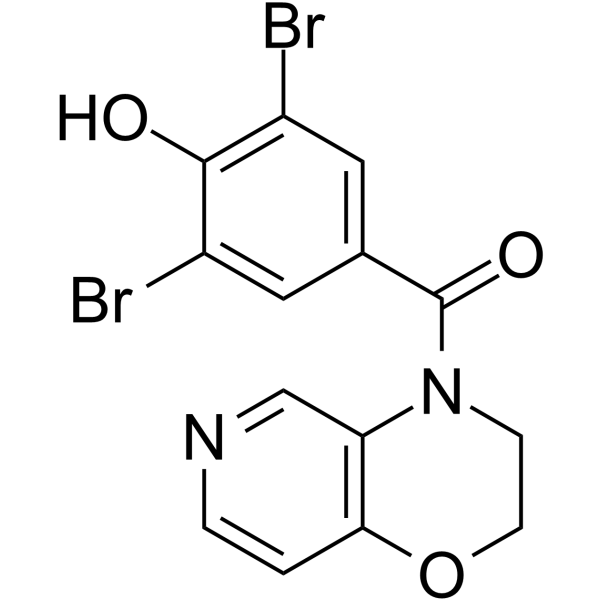| In Vivo |
Epaminurad (0-30 mg/kg, Orally, once a day for 3 consecutive days) shows uricosuric and urate-lowering effects[1]. Epaminurad (3-30 mg/kg, Orally, once) shows a good pharmacokinetic profile, increases the fractional excretion of urinary uric acid, and reduces plasma uric acid more effectively[1]. Pharmacokinetic Parameters of Epaminurad (UR-1102) in tufted capuchin monkeys[1]. Group 3 mg/kg 10 mg/kg 30 mg/kg Cmax (μg/mL) 8.96 ± 1.74 42.4 ± 12.8 92.9 ± 21.0 Tmax (h) 0.6 ± 0.2 0.5 ± 0.0 0.8 ± 0.3 T1/2 (h) 4.7 ± 0.9 4.2 ± 1.1 3.3 ± 0.8 AUC0-inf (mg*h/mL) 26.2 ± 8.1 108 ± 51 257 ± 60 Animal Model: Tufted capuchin monkeys[1] Dosage: 0, 3, 10, and 30 mg/kg Administration: Orally, once a day, for 3 consecutive days Result: Showed good uricosuric and urate-lowering effects at 3 mg/kg, the lowest dose, which were comparable to those of benzbromarone at 100 mg/kg, the highest dose, with maximum efficacy. Animal Model: Tufted capuchin monkeys[1] Dosage: 0, 3, 10, and 30 mg/kg Administration: Orally, once Result: Showed a good pharmacokinetic profile. Exhibited both good systemic exposure and significantly great plasma urate-lowering at 3 mg/kg.
|
